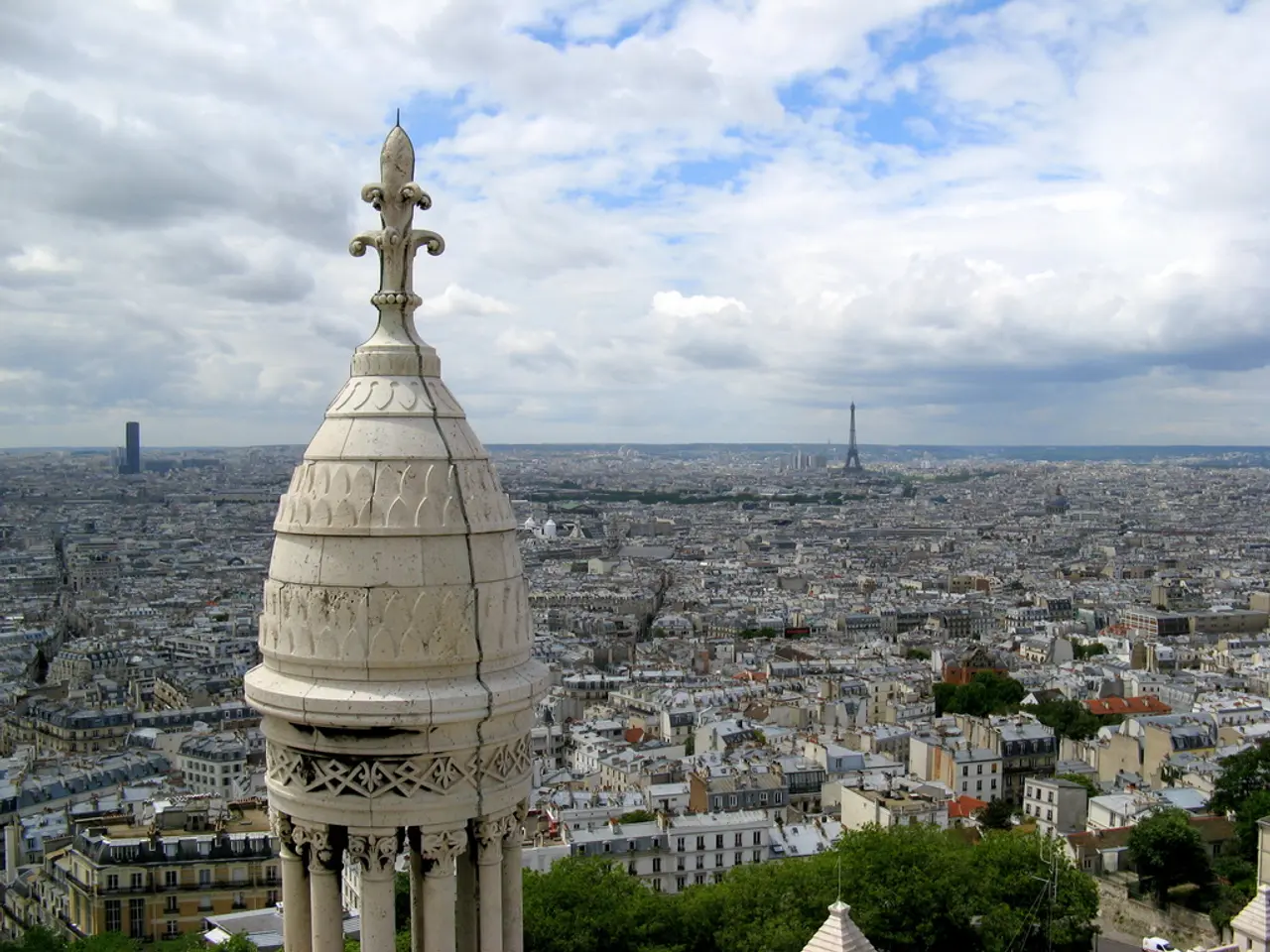Skyline Transformation in Baghdad: Soaring Skyscrapers Symbolize Progress, But at What Financial and Environmental Price?
Baghdad's Skyline Transforms Amidst Urban Densification
Baghdad, the historic city known for its ornate wooden balconies, brick facades, inner courtyards, and shaded alleys, is undergoing a significant transformation. The Iraqi capital is witnessing the construction of numerous high-rise buildings, a change that is both symbolic of economic revival and a solution to a long-standing housing crisis. However, this transformation poses serious challenges and consequences.
For some residents like Saad Hameed, 78, the change is a source of sadness. He laments the loss of Baghdad's date palms, courtyards, and alleys, replaced by high-rise apartments, generators, and construction noise. The new skyline, he believes, abandons Baghdad’s historic aesthetics and spatial arrangements, risking loss of cultural identity.
The rapid urban densification in Baghdad is leading to significant tensions around tradition, equity, and residents' well-being. Key challenges include the erosion of cultural and architectural tradition, lack of planning and regulation, equity concerns, and impact on residents’ well-being.
The erosion of tradition is evident as the new skyline deviates from Baghdad’s historic aesthetics. Unregulated development often ignores zoning laws and building codes, leading to buildings driven by profit motives rather than social or cultural needs. This transformation marginalizes low-income residents and exacerbates social inequalities.
The construction of high-rise buildings is also causing issues such as overcrowding in already crowded zones, pushing utilities, public services, and traffic beyond their capacity. The dream of owning a home in these complexes remains distant for middle-class Iraqis, as prices for both apartments and houses in the new complexes in Baghdad range from around $1,000 to nearly $6,000 per square metre.
Privacy for residents has been compromised due to the construction of towering apartment blocks. Steel gates now seal off many of the towering apartment blocks, turning them into more private enclaves with gyms, cafes, and parking lots designed for isolation rather than interaction.
Noor Makiya, an urban designer, has expressed concerns about unregulated development prioritizing money and speculative investments over the human element. Mr. Hameed questions whether the vertical models of cities like Dubai or Istanbul are suitable for Baghdad's social and cultural context. He believes that change should be well-planned with a vision on how to preserve tradition and memory, or else it's just forgetting.
Despite these concerns, not all residents view the transformation negatively. Some welcome the change as it provides them with a clean, secure, and more modern living environment. The high-rises are seen as symbols of normality, economic revival, and a solution to a housing crisis.
Urban transformation linked to centers like the University of Technology has driven spatial restructuring, including increased density and mixed-use development. However, these changes bring complex social and economic adaptations that require careful management to avoid fragmentation or exclusion within the urban fabric.
Historically, Baghdad has faced repeated cycles of trauma from wars and sanctions that damaged infrastructure and compromised public services, which complicate current urban challenges and heighten the stakes of poor planning.
In summary, the rapid densification in Baghdad signals progress but poses serious risks to preserving tradition, maintaining equity, and ensuring the well-being of all residents. Careful planning, regulation, and consideration for the city's unique cultural and social context are crucial to ensure that the transformation benefits all residents and preserves Baghdad's rich heritage.
- Despite the construction of numerous high-rise buildings being a symbol of economic revival and a solution to a housing crisis in Baghdad, it has led to the erosion of the city's cultural and architectural tradition, lack of planning and regulation, equity concerns, and impact on residents' well-being.
- The housing market in Baghdad, fueled by unregulated development, has resulted in skyrocketing prices for apartments and houses, making it difficult for middle-class Iraqis to afford homes.
- The construction of towering apartment blocks, while providing a clean, secure, and more modern living environment for some, has compromised residents' privacy by sealing off buildings with steel gates and creating more private enclaves.
- Noor Makiya, an urban designer, has expressed concerns about unregulated development prioritizing money and speculative investments over the human element, while Saad Hameed questions whether the vertical models of cities like Dubai or Istanbul are suitable for Baghdad's social and cultural context.




